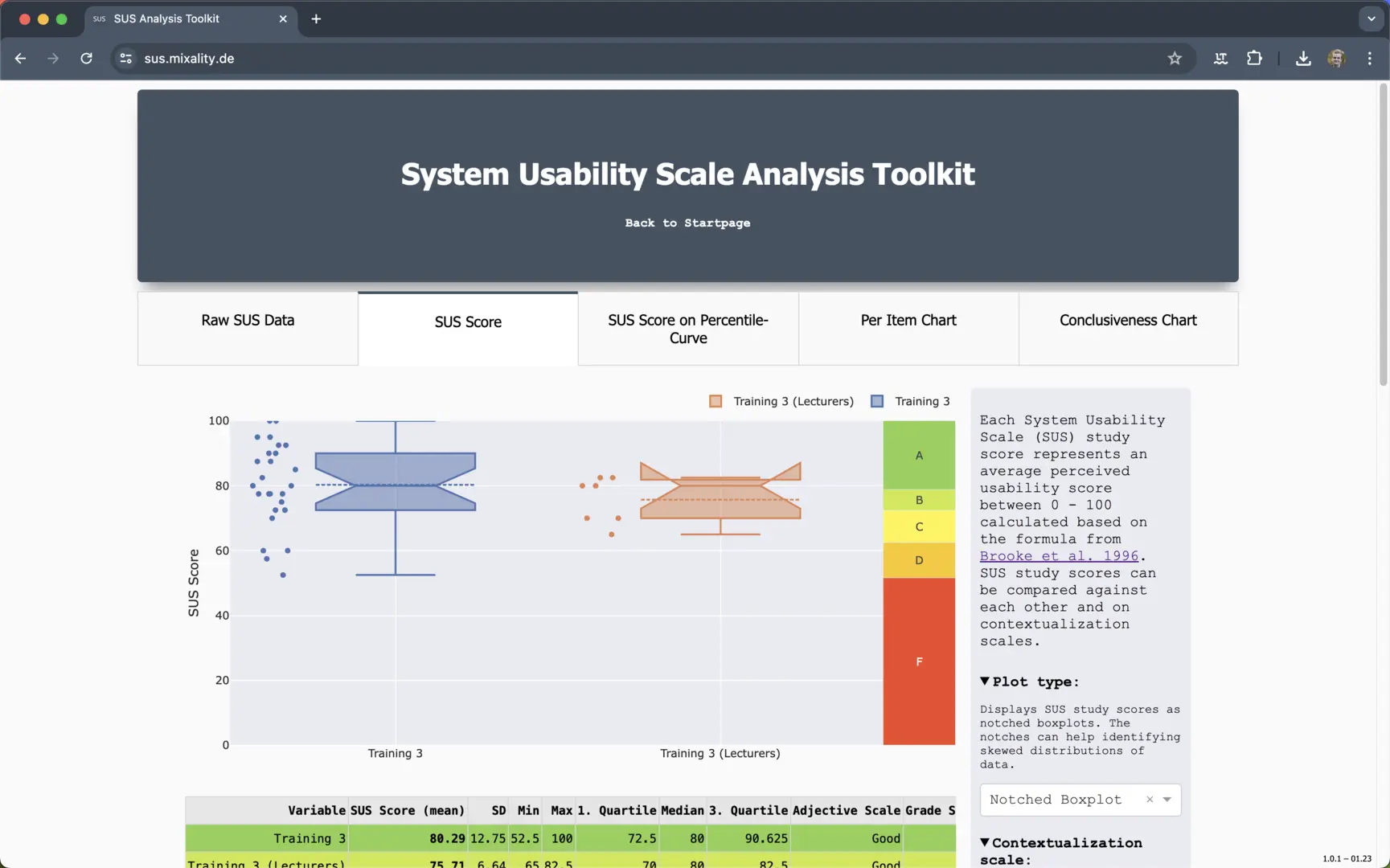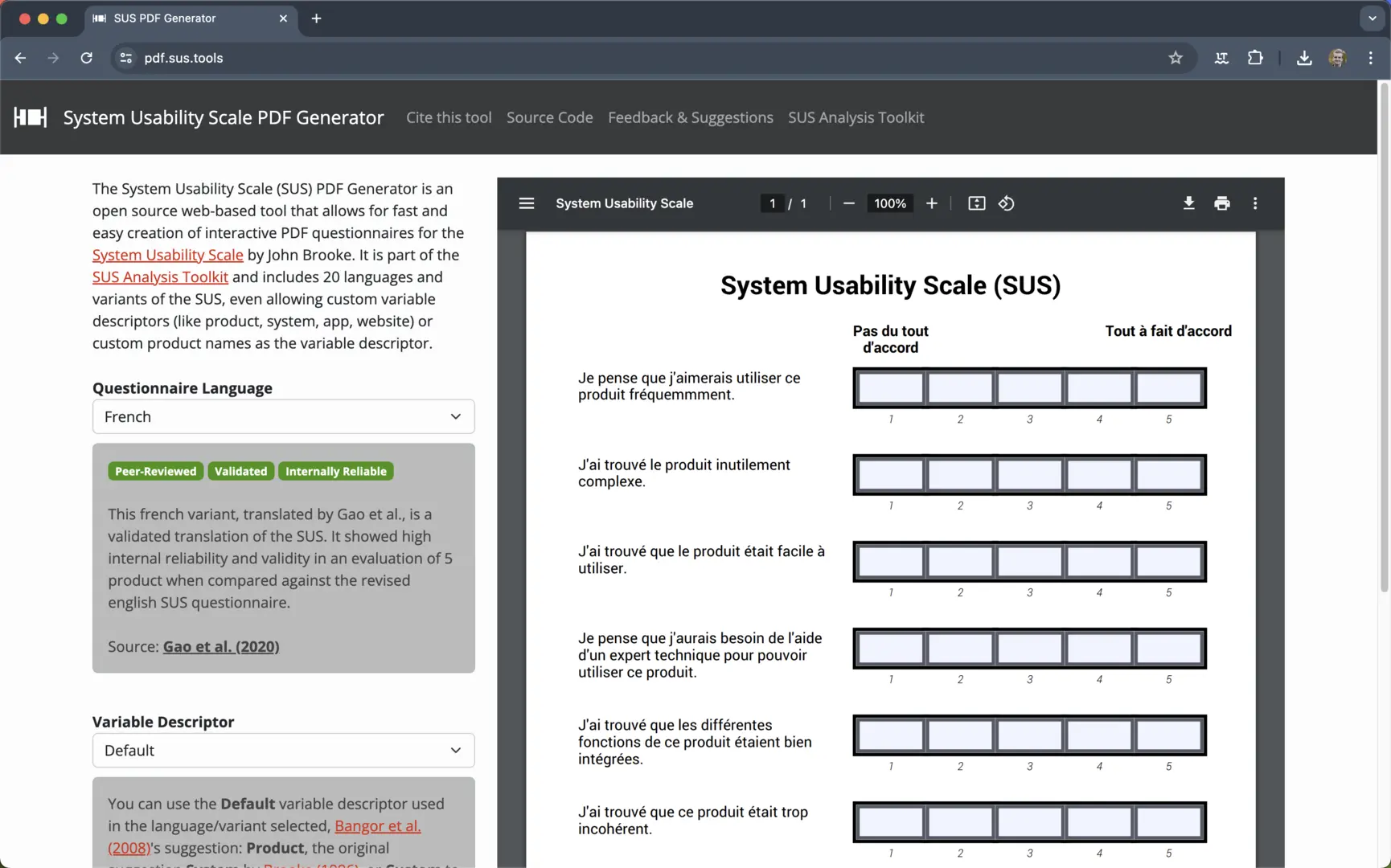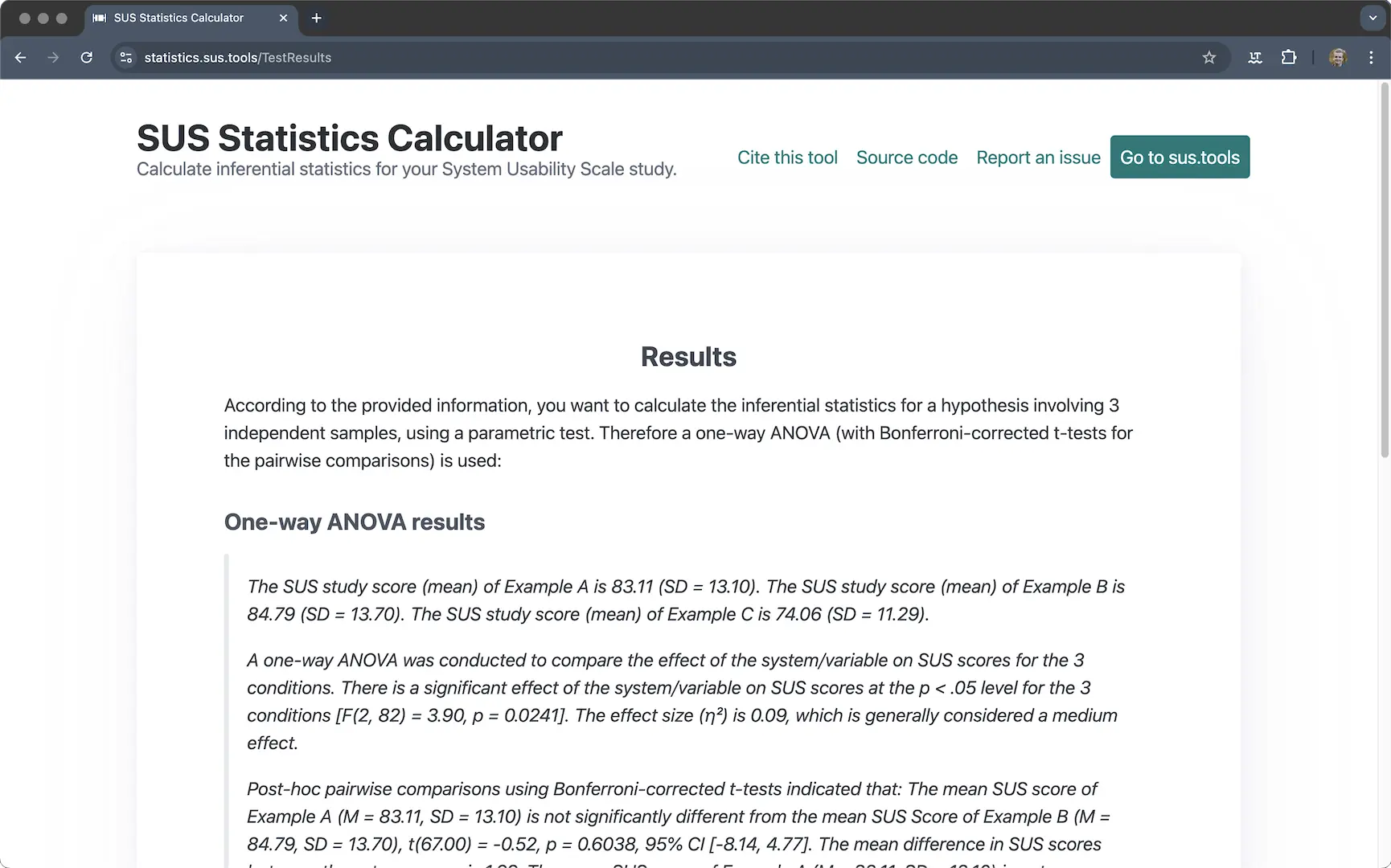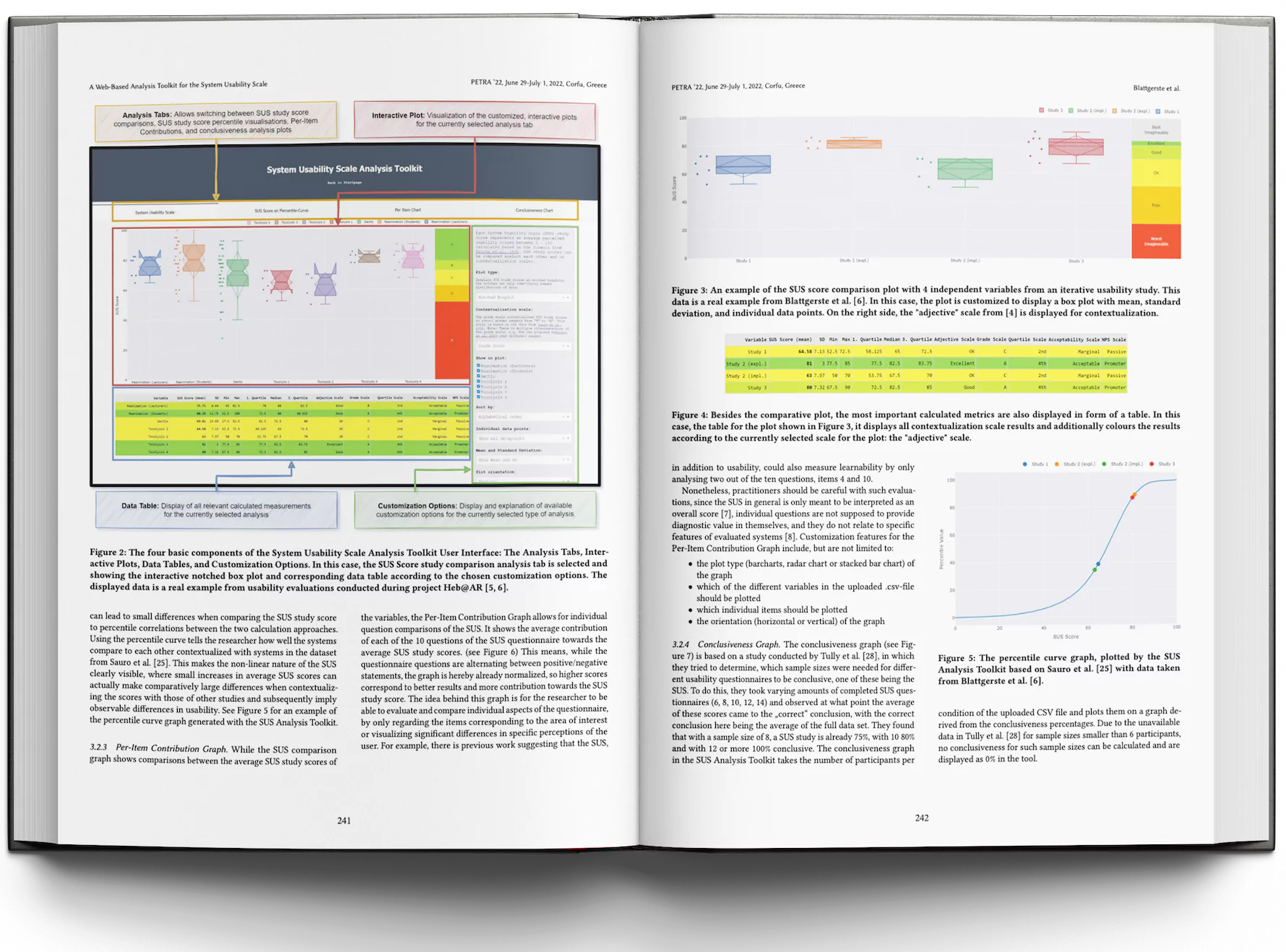The System Usability Scale Analysis Toolkit
Get insights & plots for your System Usability Scale study. Instantly!
The open-source, web-based SUS analysis toolkit is the most comprehensive solution for deploying the System Usability Scale to date. It allows you to generate questionnaires for your study and calculate, analyze, plot, interpret, and contextualize SUS study results from any source — all for free.
- Fully web-based.
- No installation or registration required. The SUS Analysis toolkit workes out-of-the-box across platforms.
- Free & Open-Source.
- All parts of the toolkit are licened under the MIT license. Users own all calculations and figures created.
- Secure & GDPR compliant.
- No data is stored on our servers. Uploaded SUS data is only used for the calculations and figures.







